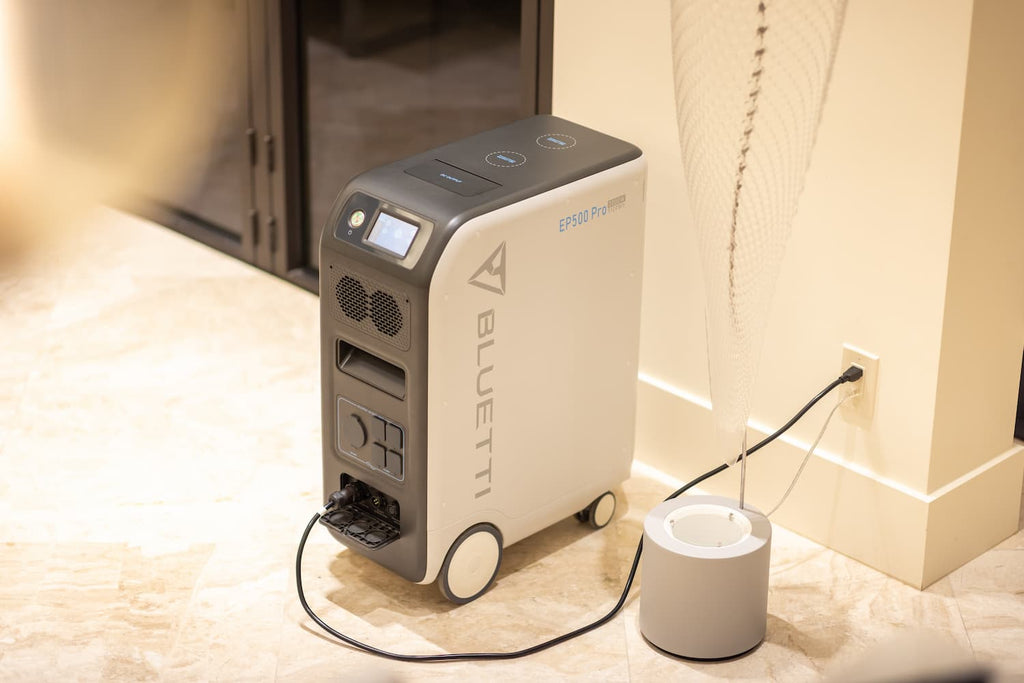Across present-day's mostly linked and data-steered business sphere, you can't overstate the demand for ceaseless, clean energy. Each company of any vertical/size can find even the least downtime amount to be calamitous. Other than the present-day downtime price tag standing at around 5600 USD per minute, unexpected affairs can also cause gadgetry vandalization, info mislaying, skipped possibilities, and stained fame.
However, the exciting update is that now businesses can circumvent the uninvited downtime upshots by using one of the straightforward and cost-effective solutions called a UPS power supply. However, the market has several types of uninterruptible power systems, meaning organizations will always find it challenging to pick one that suits their preferences and financial plans. But don't get worked up because this piece has all the answers you need.
What Is a UPS?
A UPS power supply is a gadget type that energizes hardware, almost without delay, if a grid energy failure happens, hence keeping the tools safe from vandalization. UPS setups differ drastically in their blueprint and performance. As a result, this affects the systems' time to activate the gadgetry, their price, and their potential to refine energy caliber.
Labs, manufacturing spaces, computer setups, and information servers mostly rely on UPS setups. One element that sets a UPS power supply apart is its ability to safeguard gadgetry. As a result, it's the perfect option for any state where an electrical charge may be sentient of energy loss or related energy standard matters. For instance, a UPS power supply works well for computers since energy dropping to this load may cause component vandalization or info loss.
Similarly, most medical and lab gadgets are sentient of energy supply intrusions or substandard energy quality. For most hospitals in rising economic powers, grid energy is substandard quality or undependable, causing planned or unplanned energy breakdowns for most day hours or grid voltage variations that can negatively impact gadgetry. Besides that, blackouts in labs and health centers cause downtime, impacting critical service levels and attainability. As a result, hospitals go for backup energy setups to fulfill electrical charges in the event of grid energy breakdown.
In general, a UPS power supply performs two primary duties. It delivers backup energy as fast as needed if a blackout occurs. Also, it gives some protection level from energy standard cases that may destroy gadgetry. UPS setups meet these objectives to different levels based on their blueprint and facets, which mainly dictate their market prices.
How Does an Uninterruptible Power Supply (UPS) Work?

Mainly, the UPS power supply functions by energizing the gadgets hooked up to its alternating current outlets whenever the electricity passage reduces to an insufficient electromotive force or if a full blackout happens. If an energy breakdown arises, the UPS setup instantly shifts to the battery to deliver ceaseless energy solution for the cell length, which differs from one system to another for periods scaling from a few minutes to several hours.
Based on the unit size and tech, the UPS can safeguard one computer setup up to a whole information facility. Indispensable for vitally important spaces, the UPS setup ensures IT tools and computer networks remain protected and functional during the energy breakdown moment until the businesses turn on generators or shut down protected tools like network elements and servers, hence preventing info mislaying and losing tasks on progress. Besides offering backup energy during an energy breakdown, UPS setups also offer varied safeguarding degrees against other destructive energy issues, such as electromotive force sags, frequency imbalances, and more.
Types of Uninterruptible Power Supplies
Remember that each UPS power supply is designed differently, and they come in three main topologies. These include online UPS setups, standby UPS networks, and line-interactive UPS systems. Besides offering differing protection levels against energy issues, each UPS power supply topology also attains the outcome distinctively while laying down varying battery frequency stipulations.
- Standby
Also identified as a passive/offline uninterruptible power supply, the standby tech delivers the most basal safeguarding type, allowing gadgetry to kick out of entering utility energy until it catches an issue. With this standby UPS option, the wired tools get utility energy via a direct alternating current link, with the setup vitally staying paused until there's a need for backup energy.
Expect the standby setup to function as a battery immediately if there's an energy breakdown to safeguard the wired tools. Also, expect this system to adjust accordingly for planned surges or sags. Another indispensable element to note is that the transfer period mainly materializes within milliseconds following a blackout. Besides, note that the change isn't immediate. However, the switch does not affect the energy passage to tools in several cases. In the event of anticipated lengthy breakdowns, the UPS's cell backup energy will ensure safe shutoffs to safeguard the info and gadgetry.
Generally, the standby option isn't the ideal choice for safeguarding gadgetry against other obvious energy anomalies. As a result, it works excellently on less wearisome and non-pivotal home spaces and business surroundings that don't face frequent blackouts. They are the most low-priced UPS setups, but they still feature one primary demerit. This topology resorts to the cell from time to time, a feature that decreases the battery's service-based life and lifespan.
- Line-Interactive
A line-interactive UPS shields linked gadgets from surges, energy breakdowns, and sags like the standby one while also safeguarding against voltage drizzles and voltage spikes. Mainly applied to protect IT apps and business networks, this UPS works under the microprocessor control that checks the caliber of the coming in energy and responds to variations. Besides offering more shielding than the standby one, the line-interactive systems give top-notch energy constraining and monitoring, which assists in prolonging cell life.
- Online
While the line-interactive and standby options offer varied energy conditioning degrees, the online UPS power supply delivers ceaseless shielding against most popular energy issues, providing a never-failing clean energy irrespective of coming-in uncertainties. To devise an energy source that has zero electrical intrusion issues, this online system's output voltage is fully reproduced by a series of alternating current to direct current turning, succeeded by direct current to alternating current turning.
Why Do You Need a UPS?
Besides ensuring that the gadgetry remains functional during an energy failure, a UPS power supply is also a filter that safeguards tools against energy supply variations, which may harm sensitive tools such as network gear and computer networks. Based on the topology, the UPS ensures a firm flow of clean energy to access linked gadgets, assisting in shielding against the popular energy issues that can harm gadgetry.
Furthermore, cell backup energy ensures there are zero info loss issues. It enables you to save the task in progress by giving extra time during energy breakdowns, surges, and other energy variations. Finally, this system ensures you have confidence, knowing you can avoid client disappointment, company disruption, and financial expenses resulting from energy breakdown.
How to Choose the UPS Home Battery?
Evaluating your energy requirement is the first t0 do when choosing the ideal UPS house battery. Analyze the connected devices' overall energy consumption to figure out the right UPS capacity.
Next, ensure you know well the various UPS systems. Go through the online, offline, and line-interactive to sort out the right option for you. Another thing to check is your runtime requirements. Confirm how long that UPS will be running for a ceaseless operation.
UPS Home Battery Recommend
There are three primary UPS house battery options you need to prioritize while looking for one. These include:
BLUETTI AC200 + 2XB300 Home Battery Backup

The BLUETTI AC300 ticks the box if you're after a hundred percent modular house battery backup that supports a capacity of up to 12288Wh (4xB300, 3072 watt-hours per pack). Also, you can get an overall 24576Wh capacity (4XB300S) and a 6000W/240 volts output by connecting 2xAC300s in series using the P030A Fusion Box Pro. Thus, this backup is the solution you need during energy outages or to power the family's essential gadgets during emergency situations.
Besides, the backup's inverter can change the charging percentages based on your desires from 1800 watts to 3000 watts through the wall outlets. Remember, you need the 30 amperage charging cable to boost the 1800 watts alternating current input default to 3000 watts. You'll have to buy this cable separately on BlUETTI's site.
BLUETTI EP500Pro Solar Power Station

The BLUETTI EP500Pro features a 3000-watt AC inverter and a massive 5100Wh LiPO4 battery pack. As a result, this explains why you can depend on it to energize your entire family property, family camping journey, or entire party. Besides, the outlet sources that go up to fifteen make it energize your electric cars, AC, laptops, and more.
It has two outstanding elements that ensure the system's top-notch longevity and safety. These include the LiPO4 chemistry and a present-day Management System. The internet connection and in-built dual-core microcomputer are other indispensable additions. They make it easy for the system to receive upgrades via an internet connection.
BLUETTI AC500 + B300S

With the BLUETTI AC500 + B300S, you can operate 240-volt tools with less hassle by combining two AC500 systems. Besides this, you can receive an amazing capacity of up to 36864 watts-hour by combining 12xB300S cells. This impressive capacity ensures you pay minimal electricity expenses and minimize grid dependency.
In addition, this system energizes your gadgetry, such as gas generators, with zero cases of pollution, noise issues, and fuel expenses. Thus, it's the perfect option, whether for home application purposes, an RV road journey, or pitching that tent.
Final Thoughts
In general, the UPS power supply plays an indispensable role in safeguarding pivotal loads from grid power failure issues, such as power breakdowns, spikes, and more using a battery. They ensure there's zero harm to hardware as a result of voltage spikes and overcurrents. Besides ensuring there's no information loss or damage, these systems ensure the accessibility of nets and other apps while preventing downtime.




